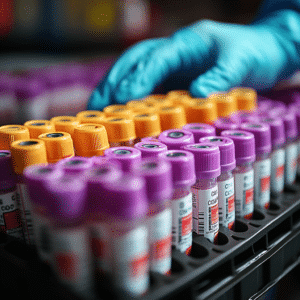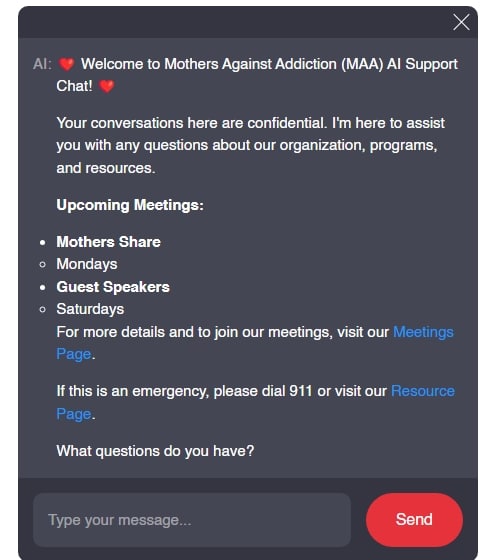When it comes to safeguarding our loved ones, especially those grappling with the harsh realities of addiction, understanding the tools available can feel like a lifeline. The Columbia-Suicide Severity Rating Scale (CSSRS) is making waves in mental health assessments, helping us decode the complexities of suicidal thoughts. You may ask, why CSSRS? Simply put, its structured approach provides parents, caregivers, and mental health professionals with the clarity they need in crucial moments.

The CSSRS Framework: An Overview
The CSSRS is specifically designed to evaluate the seriousness and immediacy of suicide risk. This tool isn’t just a checkbox during intake; it’s a comprehensive framework recognized by mental health professionals. By combining simple yet powerful initial screenings and detailed evaluations, CSSRS is adaptable in diverse environments, be it a hospital bed, a school counselor’s office, or even a community center. Early detection of suicidal ideation can make the difference for families grappling with the aftermath of substance abuse and addiction.
In a world where conversations about mental health still carry stigma, the CSSRS stands as a beacon of hope. More and more organizations are adapting the CSSRS to ensure better outcomes for individuals, especially those affected by addiction. As the world of addiction recovery expands, so does the importance of utilizing effective tools like the CSSRS to foster a supportive environment for everyone involved.

Top 5 Features of CSSRS That Revolutionize Suicide Risk Assessment
CSSRS stands out due to its standardized, straightforward questions focusing on the severity of suicidal thoughts and actions. Clarity matters. The language is concise and direct, aiming to capture the depth of an individual’s feelings. Interventions can be appropriately directed based on genuine needs, whether that’s for someone discussing fleeting thoughts or more pressing warnings of actions.
The credibility of CSSRS is unfaltering, with over 60 studies validating its effectiveness in various scenarios. This isn’t just theory; it’s rooted firmly in empirical data. Practitioners are better equipped to anticipate future suicidal behaviors based on solid research backing their assessments.
One of the most valuable aspects of CSSRS is its versatility. It’s effective for both teens discussing their struggles with substance abuse or any individual of any cultural background. This makes it an invaluable tool for practitioners who need to make nuanced assessments catering to the unique circumstances of each situation.
CSSRS promotes open dialogue between clinicians and patients. This is particularly impactful for those battling addiction, allowing for discussions that could otherwise feel daunting or stigmatizing. The tool creates a safe space where feelings can be shared, fostering honesty and trust.
To assist practitioners, CSSRS offers extensive training materials and resources. Workshops tailored specifically for healthcare providers create a stronger foundation for understanding and utilizing this important tool effectively in real-life contexts.
Real-World Applications of CSSRS in Mental Health Assessment
Now, let’s take a moment to reflect on the real-world impact of the CSSRS. At St. Joseph’s Hospital in Tazewell County, Virginia, CSSRS’s integration into the emergency department led to a staggering 40% decrease in repeat suicide attempts within just six months. This town proved to be an exemplary template for showcasing how structured assessments can effectively facilitate intervention strategies.
Imagine the ripple effect when hospitals adopt this tool—families witnessing a decrease in distress, siblings finding hope again, and parents like you who fear losing their child to substance abuse feeling a sense of agency restored. CSSRS holds the potential not just to save lives but to create a community thriving on support and understanding.
CSSRS Versus Other Suicide Risk Assessment Tools
Comparing CSSRS to other tools like the Beck Scale for Suicide Ideation (BSSI) and Suicide Assessment Five-Step Evaluation and Triage (SAFE-T) reveals its distinct advantages. The BSSI focuses narrowly on ideation, whereas CSSRS broadens its scope to encompass a wider spectrum of suicidal behavior. This makes it applicable across many situations.
On the other hand, SAFE-T aims for a more holistic view but lacks the streamlined questioning CSSRS offers. With CSSRS, practitioners receive concise, actionable insight, leading to a coherent picture of the individual’s mental state, vital for timely intervention.
Integrating CSSRS into Clinical Practice
Integrating CSSRS into routine clinical practice might sound daunting at first but is entirely feasible. Take the MetroHealth System in Ohio, for example. They trained their mental health staff specifically to use CSSRS effectively, which led to a more consistent early detection of suicide risk. By incorporating CSSRS into electronic health record systems, they also enhanced documentation and follow-up care.
By adopting this structured method, healthcare providers can boost the confidence of families dealing with addiction. Parents, like those turned to Mothers Against Addiction, can take solace that there are compassionate teams out there utilizing impressive tools such as CSSRS to support their children.
Innovative Insights on the Future of CSSRS
As we peer into the horizon, technology can expand the CSSRS’s capabilities even further. Think about an app that streamlines the CSSRS tool into an engaging interface for teens and young adults. A colorful, approachable app could enable individuals to self-assess their suicide risk, paving the way for immediate and necessary interventions.
With this kind of forward-thinking approach, we can foster a proactive culture, where future generations can access tools like CSSRS, reducing stigma and enhancing early exposure to mental health support.
The Impact of CSSRS on Families and Communities
Finally, CSSRS isn’t just a tool for individuals contemplating suicide—it’s a game-changer for families and communities. Open discussions surrounding mental health create a supportive atmosphere where families understand their loved ones better. Youth that once felt isolated can find connections and hope in the aftermath of substance abuse.
Community-based approaches employing CSSRS can take it a step further. By harnessing local resources combined with actionable insights from screenings, we can create networks of support that effectively mitigate risk. This is about creating a movement—a society emerging from shadows, committed to understanding and supporting those facing mental health challenges.
In closing, integrating CSSRS into suicide risk assessment is more than a professional obligation; it’s a powerful collective step forward. By embracing this tool, we cultivate awareness, understanding, and ultimately, a supportive environment, profoundly impacting lives. For parents navigating their child’s journey through addiction or loss, knowing there are spaces committed to healing provides not just hope, but an assurance that we can foster a community of compassion and resilience. Together, we can make a difference.
For deeper insights on the causes and effects of substance abuse, visit Mothers Against addiction. Together, we can forge a path to healing for families.
CSSRS: A Breakthrough Tool for Understanding Suicide Risk
Unpacking the CSSRS
The Columbia-Suicide Severity Rating Scale (CSSRS) is an incredible tool that’s transforming the way we assess suicide risk. This handy scale is quick and straightforward, making it ideal for both healthcare professionals and community members who want to make a difference. Did you know that tools like this can be life-savers? Just like the insights gained from examining the impact of teratogenic() effects on newborns, understanding suicide risks allows for better prevention strategies. Moreover, access to effective tools can be crucial, especially in local areas like those serviced by Miami Valley Jails,(,) where mental health issues are often prevalent.
The Reach and Impact of CSSRS
What’s particularly compelling about CSSRS is its widespread use across various settings. This includes hospitals, schools, and even community outreach programs. Just like the touching story depicted in the movie Conviction,(,) which showcases resilience against adversity, the CSSRS empowers individuals to confront the tough conversations around suicide. Additionally, for families affected by mental health issues, engaging with resources is key—much like how learning about effective ways to boost credit score overnight() can turn financial lives around. It reflects how small gains can lead to big changes!
Fun Facts about CSSRS
Did you know that the CSSRS was developed to facilitate clear communication between medical professionals and patients? This scale not only highlights the warning signs of suicidal thoughts but also encourages a proactive approach to mental health. Just like answering questions in a Quizlrt() can shed light on your own knowledge, using CSSRS can clarify risk levels for those individuals in need. Plus, the tool’s development is akin to how trends evolve, reminiscent of how Emily Alyn lind() has grown from child actress to a versatile star, embodying the importance of growth and change.
So, as you reflect on the significance of CSSRS, think of those little nuggets of wisdom you’ve picked up along the way—like the amusing but important fact about Boogers( and their surprising benefits or how community awareness can spark a change! Each piece contributes to the bigger picture of understanding mental health challenges.





























